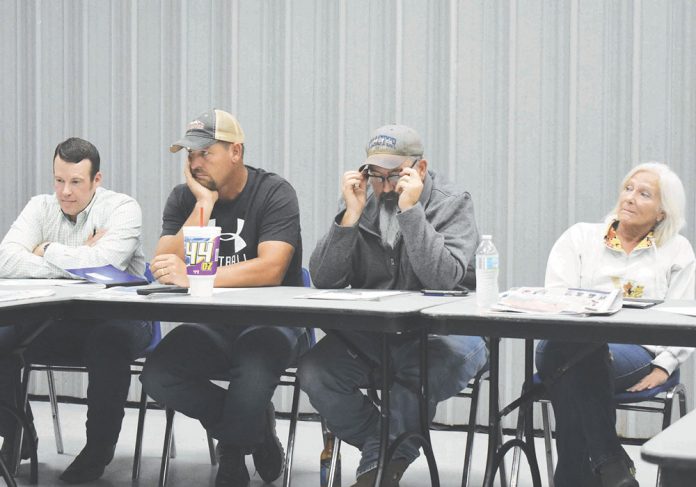
By Mindy Ragan Wood
Staff Writer
Road bond committee members met for the first time Sunday afternoon to tackle Piedmont’s worst roads.
The council-sanctioned committee will provide a recommendation to the city council in late November. A special meeting to discuss the report with the council will be held Dec. 3.
If voters approve a $5.6 or $10 million road bond, the funds will be applied to the road projects as set forth by the committee and as approved by the city council.
The committee did not conclude if it should recommend a $5.6 million or $10 million bond, but focused on developing the best method to determine the most critical road needs. Neighborhood streets would not be considered.
Chairman Ron Cardwell suggested the city pay for a road study to help the committee determine road projects, but he admitted it may be cost prohibitive. The cost could range from $300,000 to $400,000. No one spoke in favor of it.
Johnathon Hisey implied the city could sidestep a road bond by “quadrupling” the $10 monthly road fee on utility bills but exempt senior citizens. No one spoke in favor of the idea.
The committee ultimately agreed to return to the next meeting with three miles of road for consideration per ward. Roads would be eliminated and prioritized during future meetings.
Members agreed to photograph every 500 feet of roads on their list and use the smart phone app PASER (Pavement Surface Evaluation and Rating) to help determine road conditions.
“It is a nationwide rating pavement surface conditions system, 0-10, and it gives you pictures and the rating you should give a road,” Natasha Flurry said. “It’s not just (for) asphalt, it’s other surfaces.”
Everyone agreed to note the number of driveways and housing additions along a damaged roads in their ward to help determine how many people use the road.
The number of drivers could be identified through traffic counts. The committee may ask the city to purchase traffic counters to measure traffic on roads the Oklahoma Department of Transportation has not evaluated.
Ron Jones was skeptical about traffic counts because citizens avoid the worst thoroughfares to enter and leave town.
The subject of politics seemed unavoidable for the committee. It was clear densely populated areas or wards that border main roads could mean more votes for a bond.
Not everyone believed choosing roads in each ward was fair.
Steven Bottkol lives off Sara Road between 164th and 178th.
“You’re trying to do your ward, you’re trying to do your ward,” Botkol said pointing across the room. “We need to do Piedmont.”
Bottkol stressed the terrible conditions on roads outside his ward such as Piedmont Road. He believed repairing the Piedmont road in particular could boost votes.
“You’re going to have to do part of Piedmont Road for that same reason,” Bottkol said. “It’s about the city of Piedmont. That’s why I feel the ranking system is the best way to go about it more than, ‘hey I’m taking care of myself.’”
Cardwell defended the position of recommending roads from each ward.
“We’re just trying to come up three miles from every ward with the descriptions so we could kind of divide and conquer the task of looking at roads in the entire city,” Cardwell said.
Johnathon Hisey stressed how political the issue could become if a ward is left out of its plans.
“But the problem is it gets political because it gets people saying, ‘we’ll you’re leaving out Ward 2, you’re leaving out Ward 3,’” Hisey said.
Flurry corralled members back to the importance of using demonstrated methods to reach conclusions rather than speculation.
“We need a rating system,” Flurry said. “We have to let this town know that even though this is a piece of crap road, this is the homework we did to arrive at it (recommendation),” Flurry said.
The timeline to make its recommendation to the city council for road projects was a concern. Kurt Mayabb, who is not serving on the committee in his capacity as mayor, urged the committee not to rush its report at the risk of accuracy. The report is expected to be submitted to the city in November.
“If it takes us another six months, if our roads have to wait, they have to wait,” Mayabb said. “Because we cannot come in here half-assed. That deadline is for us to know what we have to hit to get it on the vote (April ballot). If we can’t hit that deadline, when it becomes November 29, December 2, we just say hey, ‘we can’t hit that deadline,’ but we keep moving forward. We keep moving forward with our homework.”
Council members will return with their initial recommendations at 3 p.m. on Sunday, Oct. 20.





